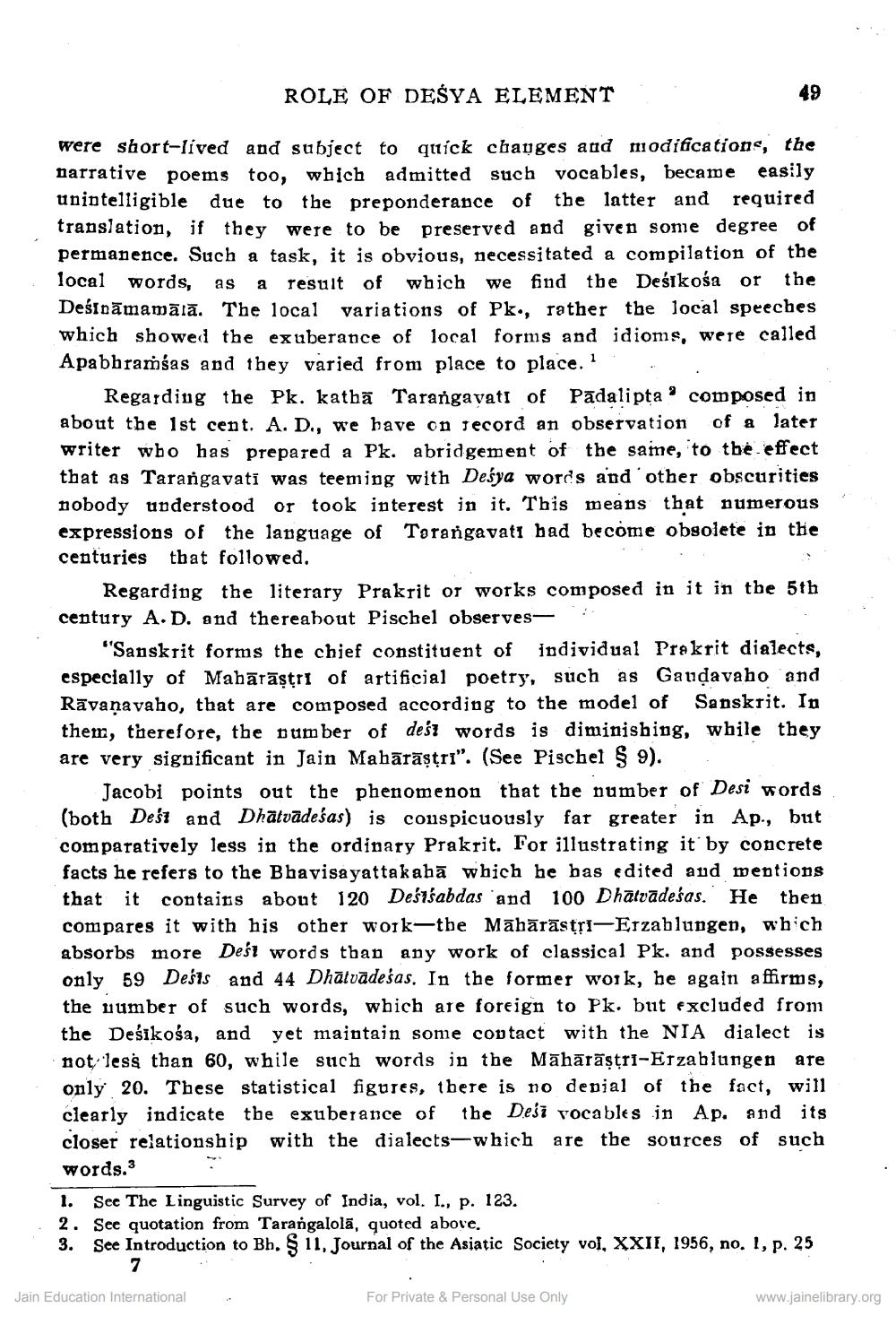________________
ROLE OF DEŚYA ELEMENT
49
were short-lived and subject to quick changes and modifications, the narrative poems too, which admitted such vocables, became easily unintelligible due to the preponderance of the latter and required translation, if they were to be preserved and given some degree of permanence. Such a task, it is obvious, necessitated a compilation of the local words, as a result of which we find the Deśikośa or the Deśināmamālā. The local variations of Pk., rather the local speeches which showed the exuberance of local forms and idioms, were called Apabbramśas and they varied from place to place."
Regarding the Pk. katbā Tarangavati of Padalipta ' composed in about the 1st cent. A. D., we have on record an observation of a later writer who has prepared a Pk. abridgement of the saine, to tbe effect that as Tarangavati was teeming with Deśya words and other obscurities nobody understood or took interest in it. This means that numerous expressions of the language of Torangavatı had become obsolete in the centuries that followed.
Regarding the literary Prakrit or works composed in it in tbe 5th century A.D. and thereabout Pischel observes-- .
"Sanskrit forms the chief constituent of individual Prakrit dialects, especially of Mahārāștri of artificial poetry, such as Gaudavaho and Rāvana vaho, that are composed according to the model of Sanskrit. In them, therefore, the number of dest words is diminishing, while they are very significant in Jain Mahārāstri". (See Pischel § 9).
Jacobi points out the phenomenon that the number of Desi words (both Dest and Dhatvadeśas) is conspicuously far greater in Ap., but comparatively less in the ordinary Prakrit. For illustrating it by concrete facts he refers to the Bhayisa yattak abā which he has edited and mentions that it contains about 120 Deśrsabdas and 100 Dhātrādeśas. He then compares it with his other work-the Māhārāsts-Erzablungen absorbs more Dest words than any work of classical Pk, and possesses only 59 Dests and 44 Dhalvādeśas. In the former work, he again affirms, the number of such words, which are foreign to Pk. but excluded from the Deśikośa, and yet maintain some contact with the NIA dialect is not less than 60, while such words in the Māhārāstri-Erzablungen are only. 20. These statistical figures, there is no depial of the fact, will clearly indicate the exuberance of the Dei vocables in Ap. and its closer relationship with the dialects-which are the sources of such words.3 1. See The Linguistic Survey of India, vol. I., p. 123. 2. See quotation from Tarangalolā, quoted above. 3. See Introduction to Bh. $ 11, Journal of the Asiatic Society vol. XXII, 1956, no. 1, p. 25
7
Jain Education International
For Private & Personal Use Only
www.jainelibrary.org




